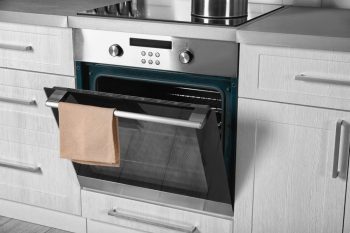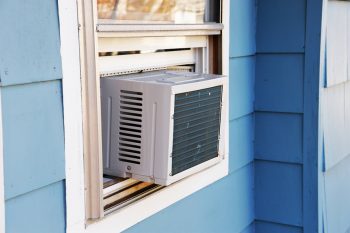
Stacking a washer and dryer is a great way to save space in your laundry room. However, what happens if you don’t have a stacking kit? Is it even advisable to try and stack these appliances without one? In this comprehensive guide, we’ll explore how you can stack a washer and dryer without a kit, the risks involved, and the precautions you need to take.
Yes, it’s possible to stack a washer and dryer without a kit. You’ll need to ensure the appliances are compatible and gather necessary tools like a spirit level, a heavy-duty rubber mat or anti-vibration pads, and optionally, lifting straps. Clear your space, place the rubber mat on top of the washer, lift the dryer onto the washer, and check for stability. Remember, this comes with potential risks and it’s important to take safety precautions. Always consult a professional if unsure.
Assessing Your Laundry Space
Before you even consider stacking your washer and dryer, it’s important to take stock of your laundry space. Measure the height, width, and depth of your area to ensure your appliances will fit. Additionally, you need to consider any clearance specifications provided by the manufacturer.
Ensuring Compatibility
Not all washer and dryer models can be stacked without a kit. It’s crucial to check the manufacturer’s instructions and requirements to confirm that your units can be safely stacked. Typically, stackable washers and dryers are front-loading machines with the same width.
Gathering Necessary Tools and Equipment
To stack a washer and dryer without a kit, you’ll need a few tools and materials. These include:
- Spirit level: To check the level of your stacked components.
- Heavy-duty rubber mat or anti-vibration pads: To place on top of the washer to minimize movement and vibrations.
- Lifting straps (optional): These can help distribute the weight of the dryer while lifting it onto the washer.
The Stacking Process
Once you’ve gathered your tools and ensured your appliances are compatible, you can begin the stacking process. Here’s a step-by-step guide:
- Prepare the area: Clear the space, ensure proper ventilation, and level the floor for stability during operation.
- Place a rubber mat or anti-vibration pads on top of the washer: This will help minimize movement and provide additional stability.
- Lift the dryer onto the washer: With the help of another person, carefully lift the dryer and place it on top of the washer. Make sure the sides and front are flush with the washing machine, and that the back of the dryer overhangs the washer slightly.
- Check the levelness and stability: Use a spirit level to ensure that the stacked units are level. Give the units a light shake to check for any swaying or instability, and make any necessary adjustments.
Potential Risks and Safety Precautions
Stacking a washer and dryer without a kit is not without its risks. These include instability and vibration, safety hazards, warranty issues, and incompatibility. To mitigate these risks:
- Ensure the units are level and all connections are secure.
- Install a platform or stacking shelf between the washer and dryer for extra stability.
- Make sure the dryer is stacked on top of the washer, as washers are heavier, especially when full of water and clothes.
- Use a rubber mat to minimize movement and vibrations.
- Consult professional assistance if unsure about any step or face issues during the stacking process.
The Impact on Maintenance and Servicing
Stacking a washer and dryer without a kit can impact maintenance and servicing of the appliances. Accessibility may be more difficult, and you may experience increased noise and vibration, which can lead to wear and tear on the appliances. Some manufacturers may void the warranty if appliances are stacked without a kit.
In conclusion, while stacking a washer and dryer without a kit is possible, it comes with potential risks and complications. Always prioritize safety and follow the manufacturer’s recommendations. If you’re unsure, it may be best to invest in a stacking kit or consult a professional.
Frequently Asked Questions
Can I stack any type of washer and dryer?
No, not all washers and dryers are designed to be stacked. Typically, only front-loading machines of the same width from the same manufacturer can be stacked. Always check your machine’s user manual or consult with the manufacturer before attempting to stack your appliances.
Can I stack the washer on top of the dryer?
No, it’s not advisable to stack the washer on top of the dryer. The washer is usually heavier than the dryer, especially when it’s filled with water and clothes. Therefore, the dryer should always be placed on top of the washer for safety and stability.
Will stacking my washer and dryer without a kit void my warranty?
It depends on the manufacturer’s terms and conditions. Some manufacturers may void the warranty if appliances are stacked without an approved kit. It’s always best to consult with the manufacturer before proceeding.
Is there a specific type of rubber mat or anti-vibration pad I should use?
You should use a heavy-duty rubber mat or anti-vibration pads designed specifically for laundry appliances. These products are designed to withstand the weight and vibrations of a washer and dryer, providing the best stability and protection.
What should I do if my stacked washer and dryer are unstable?
If your stacked washer and dryer are unstable, you should unstack them immediately to prevent any accidents or damage. Check if the floor is level and if the appliances are properly aligned. You may need to install a platform or stacking shelf between the washer and dryer for added stability, or consult a professional.












